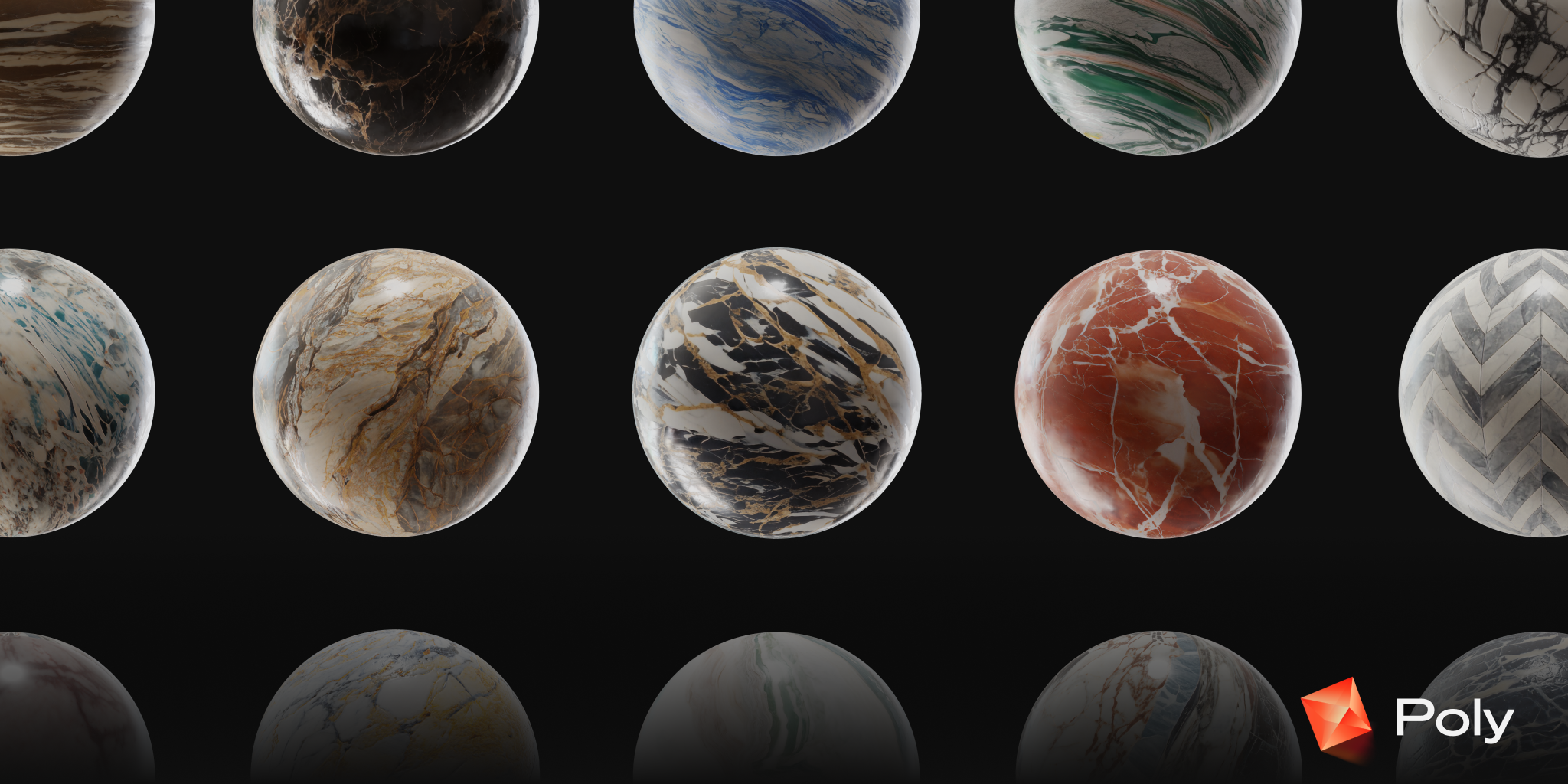Sponsored content in collaboration with Poly
In the realm of 3D design and rendering, the creation and collection of textures can often be one of the biggest hassles and most time-consuming processes in general. Poly, a new service developed by Stanford design and AI alumni Abhay Agarwal and Sam Young, aims to address this issue by utilizing artificial intelligence to generate custom textures from simple text prompts.

Custom high resolution textures are generated with simple text prompts, along with all their PBR maps
Poly's platform offers a range of features, but the star of the show is the ability to generate detailed textures up to 8K resolution with a few keystrokes, in a matter of seconds. The generated textures are seamlessly tile-able and come with the corresponding 32-bit PBR maps. The AI can also convert existing images into textures, generate variations of existing textures, and provides access to a library of textures created by other users. To date, the platform has seen over 2 million user-generated textures. The platform also features a library of thousands of ready to download textures to get started.
For Blender users, Poly could offer a new tool to streamline the texture creation process. The ability to generate high-quality textures on demand is a huge time saver, all while offering infinite customizability and fine-tuning potential. This liberates the artists to focus more on the creative aspects of their projects. Whether you're working on 3D modeling, character design, architectural visualization, game development, or AR/VR world-building, Poly's AI-generated textures could be a useful addition to your workflow. Here's Grant Abitt's take on integrate Poly to a Blender workflow:
https://www.youtube.com/watch?v=EOLmAmmwB0o
While Poly is currently developing a native Blender add-on, they already provide detailed documentation on how to integrate their textures into Blender. This means Blender users can start using Poly's AI-generated textures immediately, even without the add-on. The integration process is straightforward and well-documented, making it accessible to Blender users of all experience levels. Many Blender artists have already started incorporating Poly into their workflow to great success, such as Aymeric Rondolm who used poly in tandem with Geometry Nodes to rapidly iterate on the creation of this scene:
Poly's long-term goal is to become an online personal asset library, providing a limitless supply of highly customized design assets that can match artists' and projects' unique styles and color schemes. Poly's CEO and co-founder Abhay Agarwal makes Poly's ethos clear: "We want to build a tool that designers love and will use for their workflows... real sustained adoption comes from being a part of one’s design routine."
All in all, Poly successfully tames the unwieldy and fickle AI beast and turns it into an artist-friendly, usable and useful tool that would be a valuable addition to any 3D artist's tool set. Its capabilities offer a new level of convenience, customization and speed, and holds the potential to completely up-end traditional texture making workflows. Check it out yourself on the link below:

![Redefining Texturing Workflows with Poly: An AI-Powered Solution [$]](https://www.blendernation.com/wp-content/uploads/2023/07/KG_3hboE-728x336.png)

![Redefining Texturing Workflows with Poly: An AI-Powered Solution [$]](https://www.blendernation.com/wp-content/uploads/2023/07/tinyorangehouse-351x185.jpg)
![Redefining Texturing Workflows with Poly: An AI-Powered Solution [$]](https://www.blendernation.com/wp-content/uploads/2023/07/Every-other-point-Modulo-Thumbnail-BN-351x185.png)